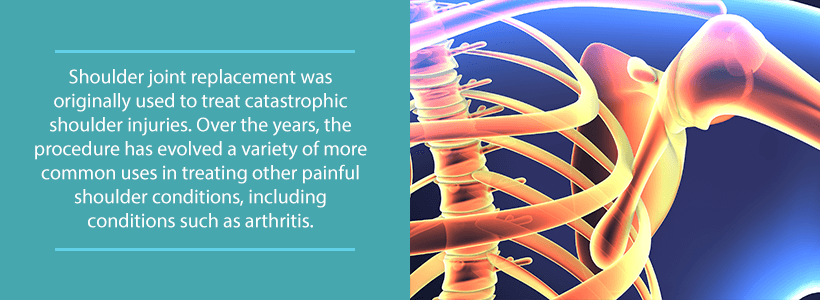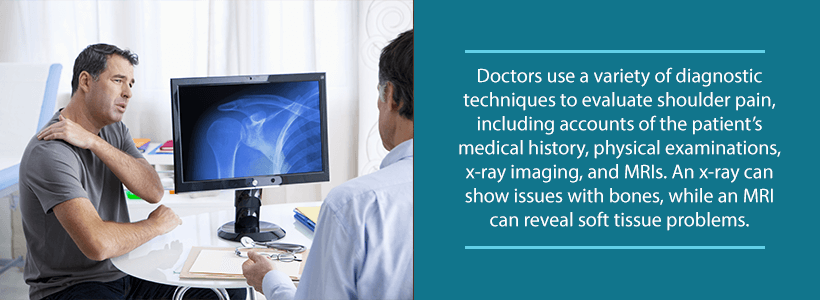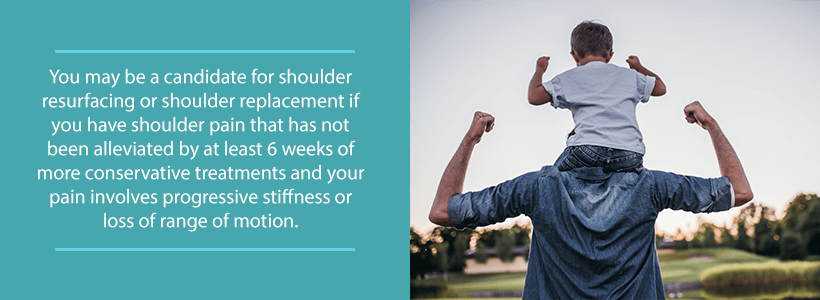If you’re dealing with frequent back or neck pain, your posture might be playing a bigger role than you think. Whether you're sitting at a desk all day or scrolling on your phone for hours,…
Shoulder arthritis is a serious condition that compromises our ability to perform day-to-day activities. As you might imagine, shoulder arthritis targets the typically smooth ball-and-socket joint of the shoulder. Under normal circumstances, the surface of this joint is smooth and allows for less friction in between the moving parts of our shoulder. Arthritis changes this fact, eliminating the cartilage in the joint that allows for the free range of motion to which we are accustomed.
Generally speaking, patients with this condition have a couple of options, but this article will focus on the two main ones: shoulder replacement and shoulder resurfacing. Shoulder joint replacement is a bit more well known, and doctors originally used it to treat catastrophic shoulder injuries. Over the years, the procedure has seen a resurgence, with doctors using shoulder replacement to treat more than just that. In fact, shoulder replacement surgery now has important uses in treating other painful shoulder conditions, such as arthritis.
Shoulder resurfacing is viewed more as an alternative to shoulder replacement and doctors typically use it on patients who are younger. Instead of replacing the humerus and scapula, shoulder replacement involves switching out the affected area with a specialized metallic head. Essentially, this replaces the surface of the joint and allows for the majority of the existing bone to remain as is.
The best treatment for you will depend on the severity of your condition. For more information, be sure to communicate regularly with your medical provider.
The Anatomy of the Shoulder
Three bones compose the shoulder joint: the humerus, scapula, and collarbone. Medical experts refer to the shoulder joint as a ball-and-socket joint. The reason for this is because the ball of the humerus fits neatly into the small socket (glenoid) of the scapula.
At the surface of where the bones touch exists a covering of articular cartilage. This is a smooth material that keeps the bones safe and enables them to have a full range of motion. Additionally, there exists a fine, smooth tissue that doctors call the synovial membrane. This membrane envelopes all of the other surfaces inside the joint of the shoulder. In a normal shoulder, the synovial membrane secretes a tiny amount of fluid that helps to eliminate the friction in between the bones of the shoulder.
Lastly, but certainly not least, there are the muscles and tendons that exist around the shoulder to provide structural support. All of these parts work together to form a joint with the greatest range of motion throughout the entire body.
Diagnosis & Evaluation
Your doctor will likely send you in the direction of an orthopedic surgeon for a more in-depth medical evaluation to determine which surgery will benefit you the greatest. Usually, such an evaluation consists of the following elements:
- Medical History: Your surgeon will need information about pre-existing medical conditions as well as the specifics of your case. This includes facts about the extent of your pain and the current functionality of your shoulder.
- Physical Examination: A physical assessment will test a multitude of things. Usually, this involves examining your shoulder’s motion, strength, and stability.
- X-Ray Imaging: As with any imaging test, x-rays will show the doctor the severity of your condition. These images will reveal things such as the loss of joint space, bone deformities, bone spurs, and any other loose articles (such as cartilage or bone) that may be floating around in places they shouldn’t be.
- Other tests: Your surgeon may deem it necessary to order other tests, such as MRIs, blood tests, or bone scans. These tests will help your surgeon determine the important factors of your condition, such as the current state of your soft tissues and bones.
Is Shoulder Resurfacing Right For Me?
You can think of shoulder resurfacing as kind of a “middle ground” treatment. It is most viable for patients who need pain alleviation, but are not quite to the point where they need a total replacement. In patients where the arthritis is mild and limited to the humeral head, it may be more ideal than a total replacement. Usually, doctors use the procedure to treat conditions such as different types of arthritis, rotator cuff injuries, and avascular necrosis.
The procedure is certainly more conservative than total shoulder replacements. That being said, only a highly skilled professional will be able to determine whether or not it is a viable alternative for the patient. In the event that the doctor does see this as a viable alternative, the possible benefits are:
- Anatomical restoration
- Less invasive surgery
- Minimal scarring/less chance of surgical trauma
- Faster recovery time
- Less painful
- The procedure is still possible in lieu of bone deformity
- No risk of fracture
- It is easy to revisit the procedure if necessary
Patients who have a shoulder resurfacing procedure can usually expect to stay in the hospital for a day or two. After a day has passed, the doctor or nurse will remove the wound dressings. Next begins the first phase of recovery, which involves a series of limited exercises. Usually, the patient will have to wear a sling for up to six weeks. After the patient leaves the hospital, they should perform exercises at home for a few weeks to restore the range of motion to the joint. Generally speaking, total recovery tends to wrap up at around three months time.
Am I a Candidate for Shoulder Replacement Surgery?
First of all, there are several different types of shoulder replacement surgeries. In fact, shoulder resurfacing is actually a subtype of shoulder replacement surgery, albeit a less invasive one. So, for the sake of brevity, this article will refer to the most common form of shoulder replacement surgery: total shoulder replacement. Whereas shoulder resurfacing involves simply replacing the surface of the humeral head with a stemless prosthesis, total shoulder replacement involves a metal ball attached to a stem with a synthetic socket.
Perhaps the biggest indicator for the necessity of this procedure is pain that is not alleviated through more conservative methods or less invasive procedures. Additionally, the pain must exhibit a progressive stiffness with accompanying loss of motion range. Typically, patients report an almost grating sensation within their ball-and-socket joint that is quite uncomfortable.
Basically, doctors only consider more traditional open surgeries like these over minimally invasive procedures when there are no other viable options. Minimally invasive procedures and conservative options are always the preferred route to take. However, the nature of how they work sometimes does not allow for proper recovery. For more information, please consult your doctor to see if this procedure is right for you.
Contact Us
If you have shoulder pain that has not abated with more conservative treatments, please contact Orthopedic & Laser Spine Surgery at (855) 853-6542. Our team of spine doctors are leading experts in the field of minimally invasive treatment and surgical care. We will work tirelessly to ensure that you are put on a treatment plan that suits your specific needs. Don’t hesitate, contact our practice today!




